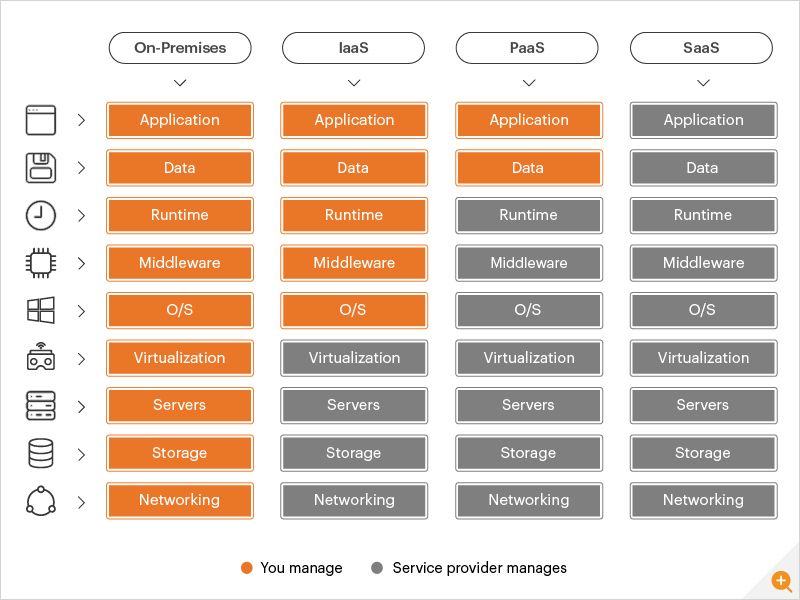Cloud Computing: The Fundamental
In today's digital age, cloud computing has become a critical component of our daily lives, powering everything from social media to online banking.

Introduction
In today's digital age, cloud computing has become a critical component of our daily lives, powering everything from social media to online banking. Despite its ubiquity, many people struggle to understand what cloud computing is and how it works. This article aims to demystify the world of cloud computing by explaining its history, development, characteristics, and how it helps companies deploy applications faster and more reliably.
What is Cloud Computing?
Cloud computing is the delivery of computing services—including servers, storage, databases, networking, software, analytics, and intelligence—over the internet ("the cloud"). This allows users to access and utilize these resources on a pay-as-you-go basis, without having to manage the underlying infrastructure. Imagine cloud computing as a buffet: you can pick and choose the services you need, without having to buy and maintain the entire spread.
History of Cloud Computing
The concept of cloud computing can be traced back to the 1960s when computer scientist J.C.R. Licklider envisioned a global network connecting people to data and applications from anywhere. However, it wasn't until the early 2000s that cloud computing, as we know it today, began to take shape. Amazon Web Services (AWS) launched in 2006, providing the first widely accessible cloud computing platform. Since then, other major players such as Microsoft Azure, Google Cloud, and IBM Cloud have joined the market, driving innovation and competition.

Characteristics of Cloud Computing
What makes a system can be called as Cloud Computing?
- On-demand self-service
Cloud computing enables users to access and configure resources as needed, without requiring human intervention from the service provider. For example, a start-up company might use AWS to quickly scale up server capacity during a product launch without having to invest in additional hardware. - Broad network access
Cloud services are available over the internet, allowing users to access resources from any device with an internet connection. For instance, a design team working remotely can collaborate on a project using cloud-based design software, regardless of their physical location. - Resource pooling
Resource pooling refers to the practice of providers using a shared pool of computing resources to serve multiple customers. Think of it as carpooling for computing power. This allows for efficient allocation of resources and cost savings. A popular example is Netflix, which uses Amazon's resource pool to efficiently stream content to millions of users. - Rapid elasticity
Rapid elasticity enables cloud computing resources to be scaled up or down quickly to meet demand. This is particularly useful for businesses that experience fluctuations in usage, such as an e-commerce store during the holiday shopping season. - Measured service
In cloud computing, users pay only for the resources they consume, much like paying for utilities. This enables businesses to optimize their spending and avoid wasting resources.
How Cloud Computing Helps Companies Deploy Applications Faster and More Reliably

Cloud Computing can bring huge benefits to companies who can leverage it strategically. Cloud Computing offer multiple features that easily beat traditional on-premises system, such as:
Infrastructure as a Service (IaaS)
IaaS provides virtualized computing resources over the internet, allowing companies to rent infrastructure components such as virtual machines, storage, and networking. This eliminates the need to invest in and maintain physical hardware. For example, Dropbox uses IaaS to store and manage its massive amounts of user data, enabling them to deploy their application quickly and scale as needed.
Platform as a Service (PaaS)
PaaS offers a platform that allows developers to build, test, and deploy applications without worrying about the underlying infrastructure. This accelerates the development process and reduces the time it takes to bring an application to market. A good example is Heroku, a PaaS provider that enables developers to deploy and manage applications with minimal effort, freeing them up to focus on writing code.
High Availability
High availability in cloud computing refers to the use of redundant components and systems designed to minimize downtime and ensure continuous operation of applications and services. Cloud providers often use techniques such as load balancing and automatic failover to distribute workloads across multiple servers, reducing the impact of hardware failures or other issues. For example, a company using AWS can leverage its multiple availability zones to maintain application performance and uptime during unexpected events.
High Scalability
Cloud computing offers high scalability, allowing businesses to easily increase or decrease computing resources as needed. This is crucial for handling varying workloads, traffic surges, or unexpected demands. For instance, an online retailer can rapidly scale its resources during a holiday shopping season to accommodate increased traffic without affecting the performance of its website. This level of scalability is difficult to achieve with traditional on-premises infrastructure.
Multi-Region Deployment
Cloud computing enables companies to deploy applications across multiple regions, improving reliability and reducing latency for users. This ensures that if an issue arises in one region, the application can continue to operate in another region with minimal disruption. For instance, Spotify uses multi-region deployment to ensure that their music streaming service remains available to users around the world, even during regional outages or maintenance.
Conclusion
In conclusion, cloud computing has revolutionized the way businesses deploy and manage applications, offering numerous advantages over traditional computing methods. Its on-demand nature, resource pooling, rapid elasticity, and measured service enable companies to develop and deploy applications faster and more reliably. As cloud computing continues to evolve, businesses that embrace and harness these technologies will remain competitive in the rapidly changing digital landscape.
About 8grams
We are a small DevOps Consulting Firm that has a mission to empower businesses with modern DevOps practices and technologies, enabling them to achieve digital transformation, improve efficiency, and drive growth.
Ready to transform your IT Operations and Software Development processes? Let's join forces and create innovative solutions that drive your business forward.
Subscribe to our newsletter for cutting-edge DevOps practices, tips, and insights delivered straight to your inbox!


